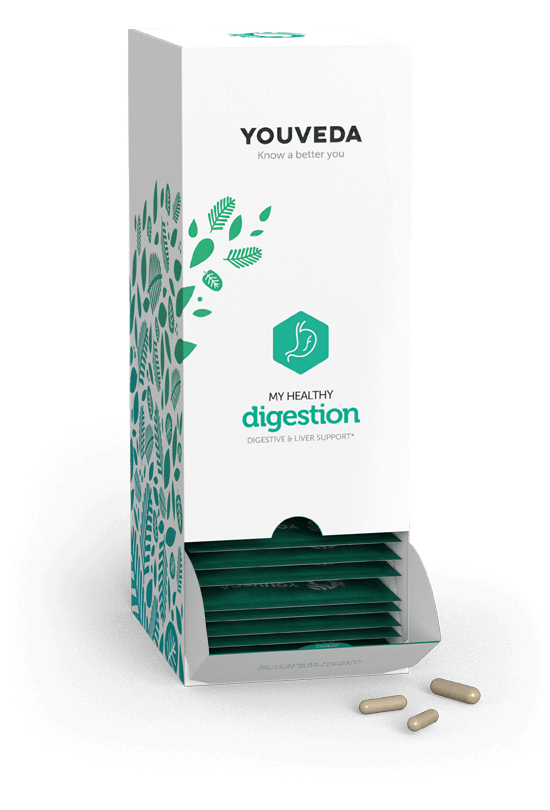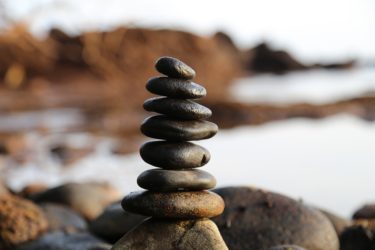Pitta | Fire & Water
Imagine summer. Warm, humid days full of sunlight, birdsong, verdant hills and forests, ripe berries, and cool breezes. Summer is Pitta in action – the season of Pitta in its ultimate expression. Intuitively, as Pitta is all about activity, action, metabolism, it makes sense – fruits and vegetables are growing, ripe for harvest, the long sunny days feel full of potential and possibility, growth is at its pinnacle, there is a heat to the season, as well as dampness, especially in areas that experience humidity.
How the Elements Combine to Form Pitta

Aside from the example of summer, what exactly is Pitta? And what does it have to do with you? Pitta is kinetic energy, energy in motion. This dosha is responsible for biological processes in the physical body, including heating and temperature regulation (breaking a sweat on a hot summer day to cool yourself down), metabolism, and digestion. Modern science would identify Pitta in the body as enzymes and amino acids. It is the assimilation of food and experiences. Pitta in balance is also responsible for understanding, learning, and intelligence.
When we take an even closer look at Pitta, we can see it is comprised of the elements of fire and water, each possessing their own unique qualities that combine to form the dosha and all its actions in the body.
Characteristics of the fire element, include heat and friction. Atomically, the atom radiates heat and light — this is a quantum wave, active and changeable. So as the sun is in our universe, the fire, or sun within the body, the solar plexus, activates temperature and metabolism. Fire is associated with light and vision or sight, as well as intelligence. Emotionally, it is connected to feelings of appreciation, recognition, and understanding. Someone with a primary dosha of Pitta might be experienced as intellectually sharp and possessing mental acuity.
The water element possesses characteristics of, unsurprisingly, fluidity, heaviness, density, softness, viscosity, coldness, and, cohesiveness. Picture how water flows when poured, through a river or stream, or in the movement of the ocean. This is chemical energy, hydrogen and oxygen atoms interacting with one another in a way that can be observed as fluid. Responsible for the sense of taste, as moisture needed to activate the ability to experience taste on the tongue, water is found in the body as salvia, in addition to cytoplasm, serum, nasal fluid, urine, sweat, and cerebrospinal fluid. The emotions connected to water are compassion, love, and contentment.

As these elements combine to form qualities of Pitta, such as hot, sharp, light, oil, liquid, pungent, sour, spreading, we can start to see how the relationship manifests in the body as a whole, and how connected we are to these ever present elements in our environment, both within and without the physical body.
Physically, we can witness Pitta in many forms – a good appetite and strong digestive fire, sharp, healthy teeth, good absorption and digestion of food, good memory, bright eyes, soft, oily skin. On the flip side, Pitta out of balance is associated with any inflammation – acne, overactive digestion resulting in loose stools, rash, sour stomach, heartburn, redness in the face, yellow discoloration of urine, feces, eyes, and skin, excessive hunger or thirst, and difficulty sleeping. Emotionally, we can see overactive Pitta as fiery emotional qualities – anger, hate, jealousy, criticism, and cynicism.
If you notice any of these qualities manifesting in your own body, it might be useful to bring some Pitta balancing practices into your life. Overall, staying cool, calm, and kind will help ease excess Pitta. Let this be your Pitta balancing mantra. Just as you would throw water on a fire that has grown too hot, you can bring cooling properties to a Pitta dosha that has become overactive. Cool, Calm, Kind. Repeat.
Strategies for bringing balance to excess Pitta:
- Avoid excess or extreme heat
- Avoid excess oil, especially fried or fatty foods
- Avoid excess steam
- Reduce salt intake
- Enjoy cooling, non-spicy foods like cayenne pepper, black pepper, curry peppers, jalapeño peppers
- Avoid sour fruits like citrus, sour wine, or overly fermented yoghurt that is sour and not fresh
- Drink cool drinks (not iced!)
- Exercise during cooler parts of the day (am and pm in summer rather than mid-day)
- Wear cooling colors, avoiding red and orange
- Increase sweet, astringent, and bitter tastes
- Avoid pungent tastes
- Include a digestive enzyme in your supplement regime to support proper assimilation and absorption, like My Healthy Digestion





